Table of Contents
- Introduction
- Fundamentals of Cooling in Aluminum Production
- How Cooling Rate Affects Microstructure
- Influence on Mechanical Properties
- Thermal Cracking and Internal Stress Development
- Cooling Rate Control in Industrial Practices
- Case Study: High-Quality Rod Production at Varying Cooling Rates
- Advanced Monitoring and Automation
- Environmental Considerations and Energy Efficiency
- Conclusion
- References
1. Introduction
Cooling is a critical phase in the aluminum rod production process. The rate at which an aluminum rod cools determines not only its internal structure but also its final properties—strength, ductility, and corrosion resistance. While faster cooling can boost productivity, it often introduces complications that affect quality. This article explores how cooling rates influence the quality of aluminum rods and what manufacturers can do to optimize this key step.
Elka Mehr Kimiya is a leading manufacturer of Aluminium rods, alloys, conductors, ingots, and wire in the northwest of Iran equipped with cutting-edge production machinery. Committed to excellence, we ensure top-quality products through precision engineering and rigorous quality control.
2. Fundamentals of Cooling in Aluminum Production
After hot extrusion or continuous casting, aluminum rods must be cooled. This is typically achieved using water, air, or a combination of both. Cooling must occur uniformly to avoid warping, cracking, or residual stress. In general, the faster the cooling rate, the more likely it is to produce a fine-grained structure, which improves strength. However, too rapid a rate may cause surface cracking or internal voids.
Cooling rate is measured in degrees Celsius per second (°C/s). For example, water quenching can reach rates above 1000°C/s, while air cooling may range between 5°C/s and 100°C/s depending on the system.
3. How Cooling Rate Affects Microstructure
Microstructure in aluminum rods primarily consists of grains whose size and orientation determine material behavior. High cooling rates tend to create finer grains due to limited time for atoms to rearrange into large crystals. Fine grains enhance mechanical properties and improve fatigue resistance.
| Cooling Rate | Average Grain Size | Dominant Phase | Hardness (HV) |
|---|---|---|---|
| 10°C/s | ~80 µm | α-Al + Si | 55 |
| 100°C/s | ~25 µm | α-Al | 65 |
| 1000°C/s | ~10 µm | α-Al | 72 |
Source: Based on comparative metallographic analysis of Al-Si-Mg alloys.
4. Influence on Mechanical Properties
Cooling rate has a direct effect on tensile strength, yield strength, and elongation. Faster cooling typically increases strength but may reduce ductility. The key lies in balancing these trade-offs.
| Alloy | Cooling Rate | Tensile Strength (MPa) | Yield Strength (MPa) | Elongation (%) |
| AA6063 | Slow (~20°C/s) | 145 | 110 | 16 |
| AA6063 | Medium (~200°C/s) | 190 | 155 | 12 |
| AA6063 | Fast (~1000°C/s) | 215 | 170 | 8 |
5. Thermal Cracking and Internal Stress Development
Rapid cooling, while useful for hardening, introduces significant temperature gradients across the rod’s cross-section. This differential cooling can generate thermal stress, which leads to cracking, especially in thick-section rods. Advanced simulations show that stress increases exponentially when the cooling differential exceeds 150°C between core and surface.
Engineers often counter this risk by implementing stepwise or staged cooling techniques, where rods are gradually exposed to decreasing temperatures.
6. Cooling Rate Control in Industrial Practices
Large-scale manufacturers use controlled water sprays or forced air tunnels. The process is monitored with thermal cameras and feedback systems to ensure target cooling profiles are achieved. Variations in ambient temperature, water pressure, and alloy composition require real-time adjustments.
In one real-world example, switching from uncontrolled water quenching to a staged mist cooling system reduced defect rates by 37% in a mid-size extrusion plant.
7. Case Study: High-Quality Rod Production at Varying Cooling Rates
A study conducted at a Turkish aluminum processing facility tested AA6061 rods under three cooling regimes: slow air cooling, rapid water quenching, and hybrid mist cooling. The hybrid method provided the best balance: high strength and minimal surface cracking. Their hybrid system, designed with zone-specific cooling jets, allowed for tight control over thermal gradients, reducing internal stresses significantly.
| Cooling Type | Crack Frequency | Surface Finish Quality | Post-Processing Needs |
| Air Cooling | Low | Good | Minimal |
| Water Quenching | High | Fair | High |
| Hybrid Mist | Very Low | Excellent | Minimal |
8. Advanced Monitoring and Automation
Modern cooling systems employ IoT sensors, automated valves, and AI-based controllers to adapt in real time. These systems can adjust nozzle pressure and angle within milliseconds, maintaining uniform cooling even when input conditions fluctuate. This approach increases yield and consistency.
9. Environmental Considerations and Energy Efficiency
Cooling also affects energy consumption. Closed-loop water cooling systems minimize waste and improve thermal efficiency. Plants using recycled water systems report up to 20% energy savings annually. Additionally, smarter controls reduce unnecessary heat loss, helping facilities lower their carbon footprint.
10. Conclusion
The cooling rate plays a pivotal role in determining the structural and mechanical quality of aluminum rods. Fine-tuning this parameter during production is crucial to meeting performance standards across applications. With technological advancements and sustainable practices, manufacturers can now achieve consistent quality while reducing waste and energy use. Understanding and controlling cooling behavior remains a cornerstone of modern aluminum metallurgy.
11. References
Totten, G. E., & Mackenzie, D. S. (2003). Handbook of Aluminum: Volume 1: Physical Metallurgy and Processes. Marcel Dekker. Davis, J. R. (1993). Aluminum and Aluminum Alloys. ASM International. Polmear, I. J. (2006). Light Alloys: From Traditional Alloys to Nanocrystals. Butterworth-Heinemann. Liu, Y., et al. (2017). Effects of Cooling Rates on Microstructure of AA6061 Aluminum Alloy. Journal of Materials Processing Technology. Kaufman, J. G. (2000). Introduction to Aluminum Alloys and Tempers. ASM International. Aluminum Association (2022). Sustainable Production Practices: Aluminum Industry Report.


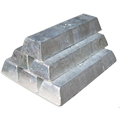
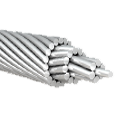

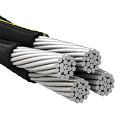
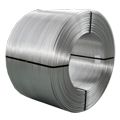
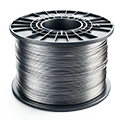
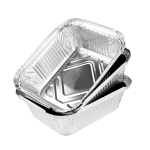








No comment